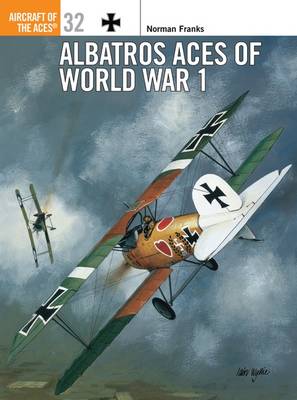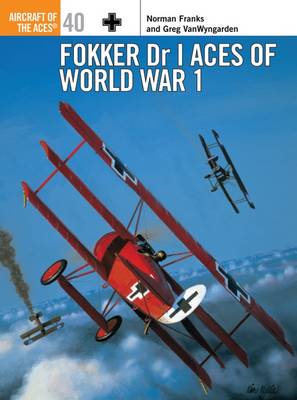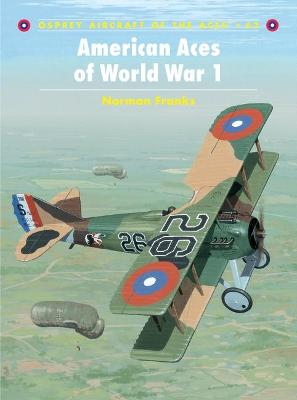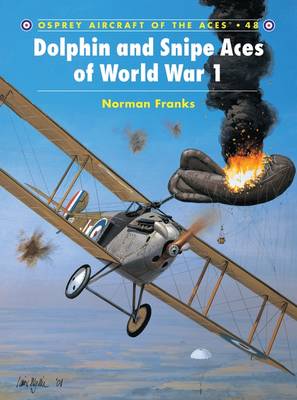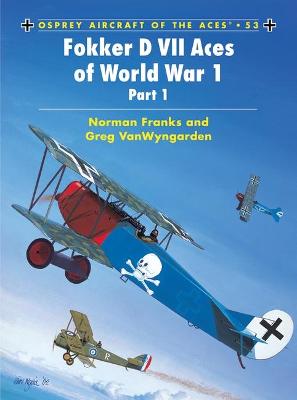Osprey Aircraft of the Aces S.
6 primary works
Book 32
The Albatros family of fighters were amongst the most effective aircraft employed by the Idlfieg (Imperial German Air Service) for much of World War 1, with the D.III and D.Va being flown by most of the 363 pilots who qualified as aces at some point in their often brief careers. The Albatros was the scourge of the RFC on the Western Front in 1916-17, with pilots of the calibre of von Richthofen, Boelke and Schleich cutting swathes through their opponents. Well over 4000 Albatros scouts were built between 1916 and 1918, and they were also extensively used by the Austro-Hungarians against Russian, Italian and British aircraft until war's end.
Book 33
The French Nieuport company provided the Allied air forces with the first true fighter scout of World War 1 in the shape of the diminutive XI of 1915. Based on the Bebe racer, built for the abandoned Gordon-Bennett Trophy of the previous year, the aircraft utilised a sesquiplane (lower wing much smaller than the upper wing) arrangement which gave the XI extreme manoeuvrability. It was the only scout respected by the all-conquering German Fokker E-series of 1915-16, and was flown by French, British, Russian, Belgian and Italian aces. The XI was replaced from May 1916 onwards by the bigger and more powerful XVII. which proved to be one of the best fighters of World War 1.
Book 40
Undoubtedly the most famous fighter type to see service on either side during World War I, the Fokker Dr I was a revelation when it entered service on the western front in 1917. Manfred von Richthofen's JG I 'circus' was the first Jasta to completely re-equip with the new fighter, and in the skilled hands of its numerous aces, the Dr I proved a formidable opponent. The Dr I remained in service on the Western Front until replaced by the superior Fokker D VII in May 1918. Just weeks prior to that, however, Germany's leading ace, the great 'Red Baron', had been killed at the controls of a Dr I.
Book 42
American fliers arriving in Europe from September 1971 brought with them no aircraft. Instead, US units had to obtain machines mainly from the British and French. From early 1918 American pilots were issued with SPAD fighters and they never looked back. As this volume details, the first American trained pilot to become an ace was Lt Douglas Campbell, who shot down five German aircraft by the end of May 1918. He was a member of the celebrated 94th 'Hat in the Ring' Aero Squadron, which created the bulk of American aces in World War I.
Book 48
This volume focuses on the combat careers of the last of the famous Sopwith fighters to enter service during World War I, the Dolphin and the Snipe, both of which were built on the strong scouting heritage of the Pup and Camel. The Dolphin featured the unique negative-staggered biplane wing arrangement, which provided the pilot with the best possible tactical view forward for seeking out his enemy. Used extensively on the Western Front, the Dolphin proved very effective in combat, with a substantial number of British aces scoring kills with the fighter. The Snipe was built as the successor of the highly successful Camel, and entered service with the fledgling Royal Air Force in the summer of 1918. Although seeing just a few months of action before the Armistice, the Snipe nevertheless proved its superiority over virtually all other fighters.
Book 53
Designed in a great rush at the end of 1917 just in time to take part in the German standard fighter competition held in January/February 1918, the D VII easily walked away with first prize. As Germanys premier fighter unit, von Richthofens JG I (led by Hermann Goring in the wake of the 'Red Baron's' recent death) received the first examples of the D VII to reach the frontline in late April. Built to oppose the new generation of French SPAD XIIIs and British SE 5as and Camel fighters, the D VII was arguably the best all-round fighting scout of the Great War.
